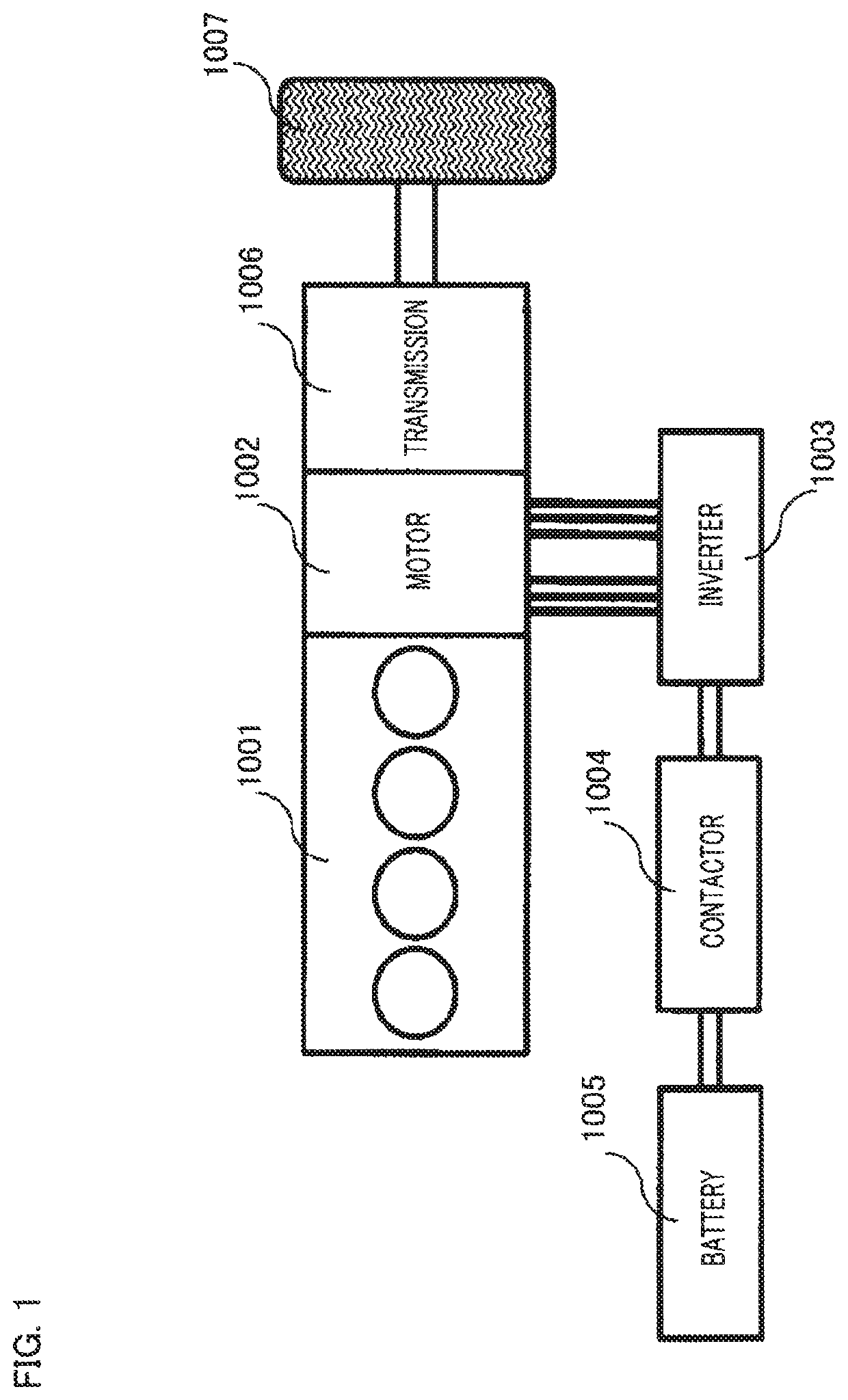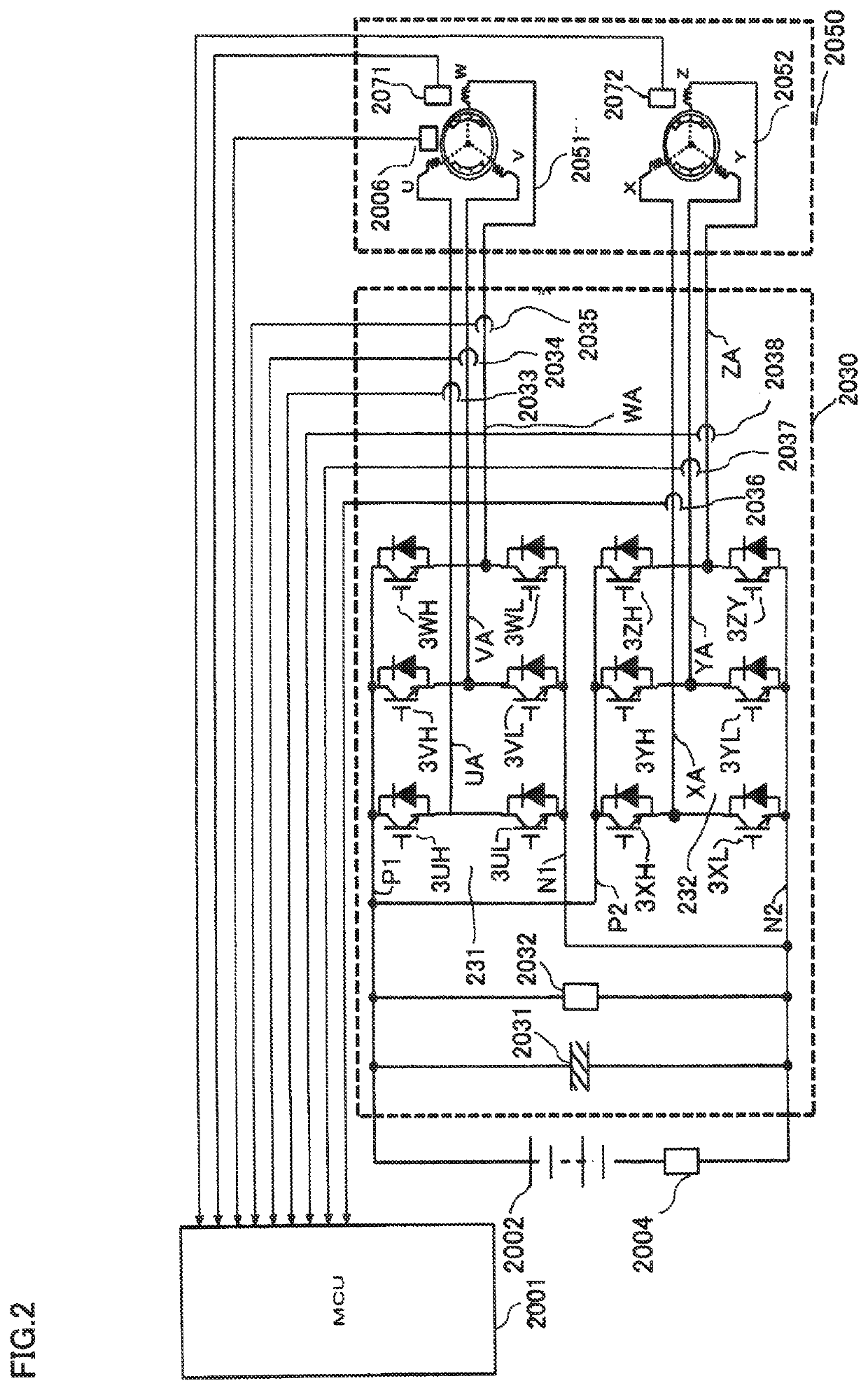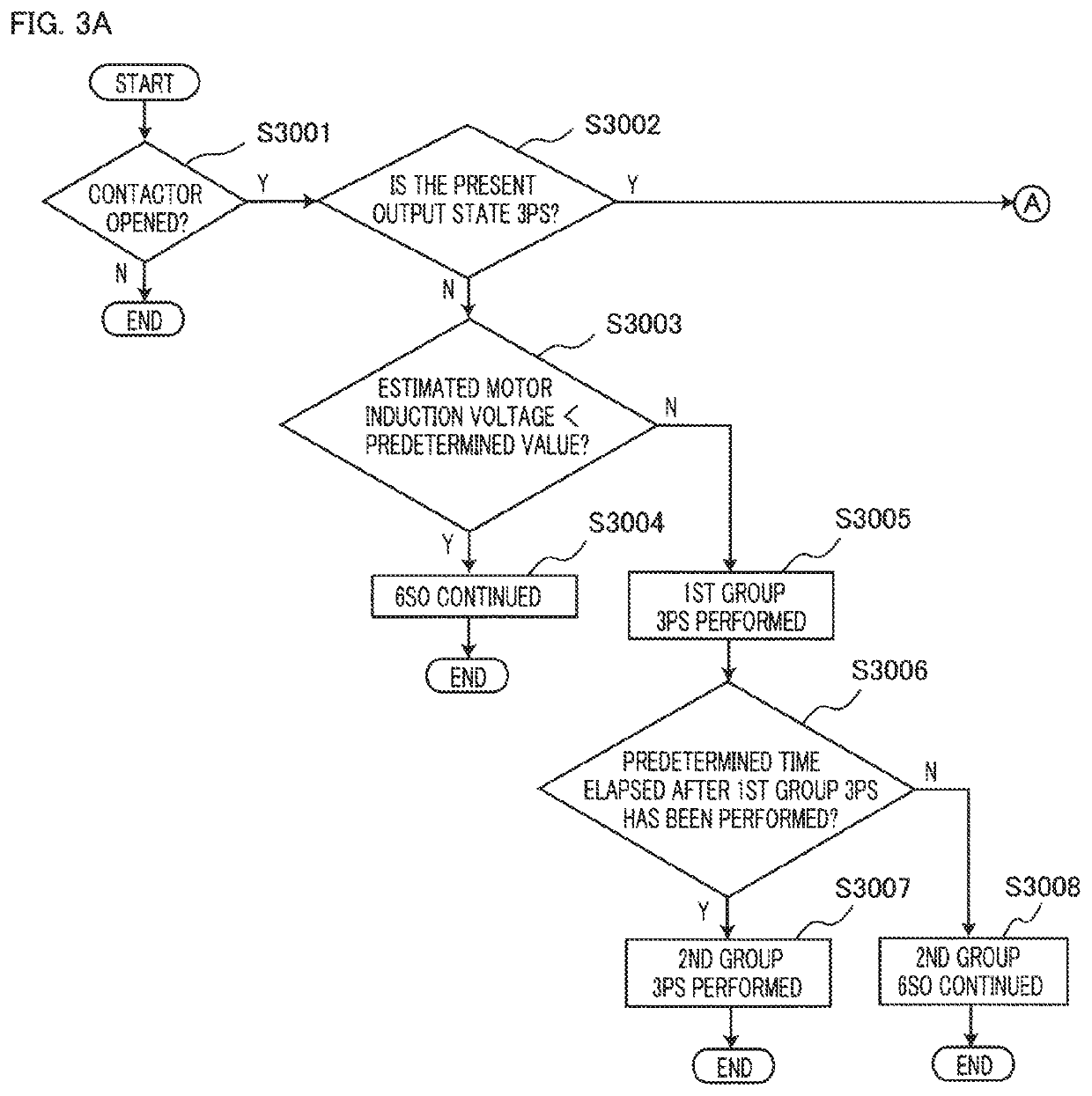Multigroup-multiphase rotating-electric-machine driving apparatus
a technology of multi-phase rotating and driving apparatus, which is applied in the direction of electric/dynamo-electric converter starters, control systems, dynamo-electric converter control, etc., to achieve the effect of affecting the braking torqu
- Summary
- Abstract
- Description
- Claims
- Application Information
AI Technical Summary
Benefits of technology
Problems solved by technology
Method used
Image
Examples
embodiment 1
[0040]FIG. 2 is a schematic configuration diagram of a rotating-electric-machine driving apparatus according to any one of Embodiment 1 and after-mentioned Embodiment 2 of the present invention. In FIG. 2, as an example of the rotating-electric-machine driving apparatus according to any one of Embodiments 1 and 2 of the present invention, a motor inverter system having an AC-rotating-electric-machine driving apparatus is represented.
[0041]In FIG. 2, a two-group-three-phase motor 2050 corresponds to the moto 1002 in foregoing FIG. 1 and is a so-called permanent-magnet rotating electric machine that is configured as a motor generator having a power generation function, that has independent two groups of armature windings in the stator, and that has magnetic-field poles formed of permanent magnets in the rotor; however, in the following explanation, the permanent-magnet rotating electric machine will be referred to simply as a two-group-three-phase motor.
[0042]In its stator, the two-gr...
embodiment 2
[0112]Next, a rotating-electric-machine driving apparatus according to Embodiment 2 of the present invention will be explained. FIG. 4A and FIG. 4B are flowcharts representing the operation of the rotating-electric-machine driving apparatus according to Embodiment 2 of the present invention. The differences between Embodiment 1 and Embodiment 2 are only the respective differences between the steps S3006, S3007, and S3008 in FIG. 3A and the steps S4006, S4007, and S4008 in FIG. 4A; thus, in the explanation below, the differences will mainly be explained. Hereinafter, by use of FIG. 4A and FIG. 4B, the case where the step S4006 is utilized when the all-phase cutoff (6SO) state is switched to the three-phase short-circuiting (3PS) state will be explained in detail.
[0113]In the step S4006 in FIG. 4A, it is determined whether or not a first-group q-axis current is of a positive value. In the case where when the three-phase short-ciruiting (3PS) is applied to the first group including the...
PUM
 Login to View More
Login to View More Abstract
Description
Claims
Application Information
 Login to View More
Login to View More - R&D
- Intellectual Property
- Life Sciences
- Materials
- Tech Scout
- Unparalleled Data Quality
- Higher Quality Content
- 60% Fewer Hallucinations
Browse by: Latest US Patents, China's latest patents, Technical Efficacy Thesaurus, Application Domain, Technology Topic, Popular Technical Reports.
© 2025 PatSnap. All rights reserved.Legal|Privacy policy|Modern Slavery Act Transparency Statement|Sitemap|About US| Contact US: help@patsnap.com



